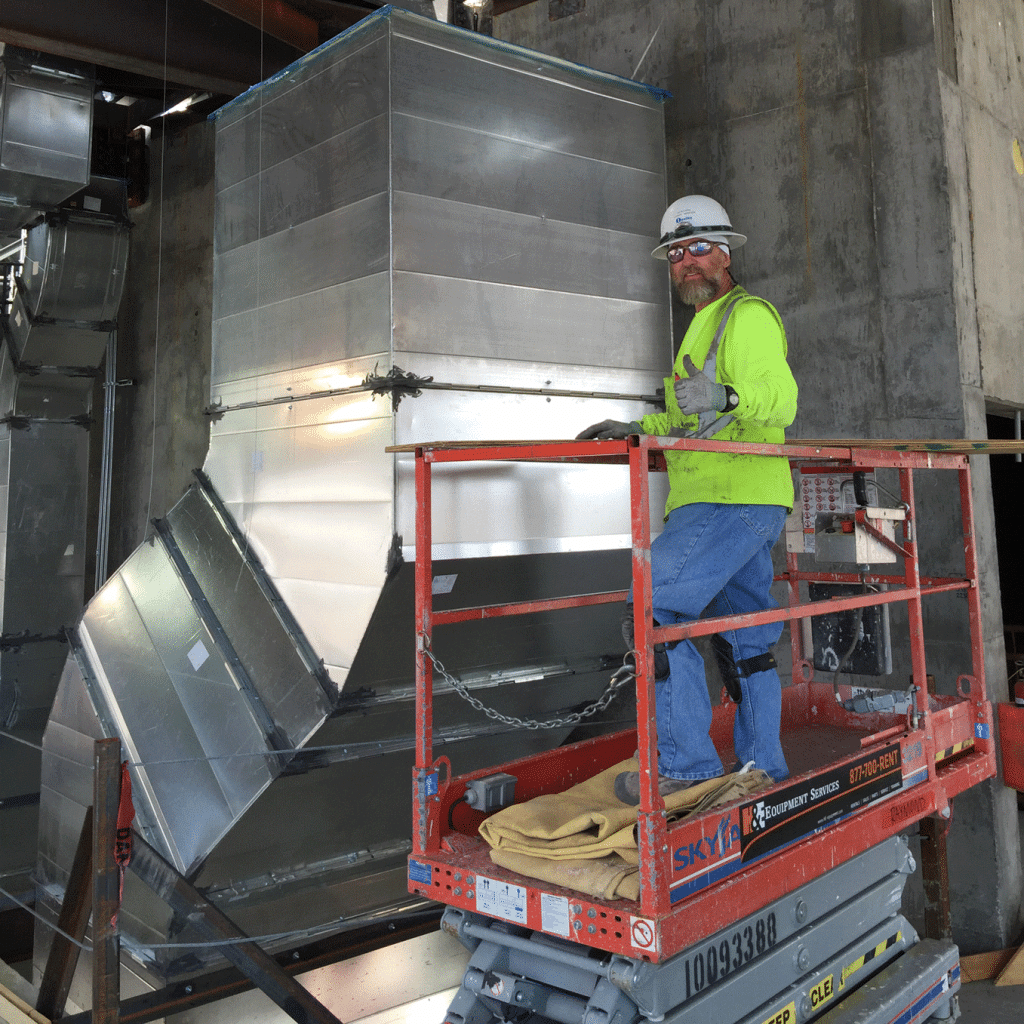
The sheet metal trade may be one of the oldest inthe country, but modern technology propels it forward—and SMART’s affiliated funds are helping members keep pace.
AutoCAD, Navisworks, Robotic Total Station and other tools make it easier to design HVAC systems, communicate with the job site, collaborate with other trades and allow changes to happen that once would have been impossible.
Greg Greene, a detailer/designer for Metropolitan Mechanical Contractors in Minnesota, marvels every day at the changes since he turned out in 1980. In 1999, slowed by degenerative arthritis, he traded his tools and embraced for the then-new technology.
Greene’s 37 years of craft and digital experience went into designing HVAC at the Minnesota Vikings’ U.S. Bank Stadium and his current project, the BMO Harris Bradley Center, home of the NBA Milwaukee Bucks.
Virtual feet on the ground
Working on a Milwaukee project from his Minnesota office—400 miles away–would not have been possible even five years ago. Today, Navisworks lets anyone associated with the project virtually walk around the building like a first-person player in a video game.
“It allows you to tour the facility and make changes in the 3D virtual world instead of waiting until the building is finished and you wish you could have done something different,” Greene said. That brings everyone into the loop clarifying every detail.
“I’m updating the model four to five times an hour, so they’re constantly getting those updates,” Greene added. “We constantly work with the other trades. There is a lot of back and forth, especially on remote projects. Before, everyone would need to work on the same model at the same time. It would’ve been a lot harder.”
Similarly, Robotic Total Station allows workers to precisely place duct and pipe hangers and floor openings using land-based positioning devices fed by software. Once again, it means fewer mistakes.
“On a lot of drawings, we aren’t dimensioning anymore, because we know the hangers are done before the deck floors,” Greene said. “Most trades are getting on board with coordinating the hangers. If you do it from the get-go, you really save time.”
Experience required
While this undoubtedly sound cool to younger members, including upcoming and current apprentices, the work still requires skills that only experience can provide, said Ron McGuire, Building Information Modeling (BIM) specialist for the ITI.
“The gaming age has influence on a generation,” McGuire said. “But you can’t teach experience. Someone with ten years in the field knows how a job runs. It’s hard to reenact that in a classroom.”
By embracing the opportunity to transition his expertise from the job site to the BIM world, Greene reinvigorated his passion for his career—and saved it.
“I saw it as a way to be able to work until I’m 62,” Greene said. “I could see field work wasn’t going to be long term. A lot of sheet metal workers don’t want to sit at a desk all day, but for me, it saved my career.”
ITI builds the leading edge
Industry demands these technologies, and the ITI develops the instructors who train members at their home locals. Sessions and courses are already broad and always expanding, to keep members not just current, but on the leading edge.
For information on ITI instructor classes, visit www.sheetmetal-iti.org/catalog.
Related News
- Operation Lifesaver campaigns to promote rail safety in 11 states
- New TD Crew Room Flyers Available
- Colorado bill criminalizing transit assault one step closer to becoming law
- Honoring the Legacy of Brother John A. Saunders
- Kansas funds passenger rail expansion
- SMART’s General President Defends Our Brother
- Maryland Passes Monumental Transit Safety Bill
- Brother Wirth Crowned Champion in 168-Pound Masters Division Victory
- Chairman Pauli Announces Retirement, SMART-TD celebrates his career
- SMART statement on Supreme Court’s decision regarding Kilmar Armando Abrego Garcia’s return to the United States